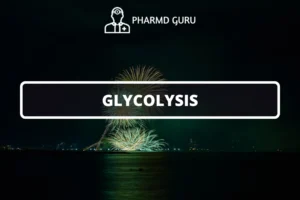Porphyrias are a group of rare inherited metabolic disorders characterized by abnormalities in the production of heme, an essential component of hemoglobin and various enzymes. These disorders result from defects in the enzymes involved in the heme biosynthesis pathway. In this article, we will explore the different types of porphyrias, their causes, symptoms, diagnosis, and management.
SCROLL DOWN TO THE BOTTOM OF THE PAGE FOR ACTUAL NOTES
Table of Contents
- Introduction to Porphyrias
- Types of Porphyrias
- 2.1 Acute Porphyrias
- 2.2 Cutaneous Porphyrias
- Causes of Porphyrias
- Symptoms of Porphyrias
- Diagnosis of Porphyrias
- Management and Treatment
- Living with Porphyrias
1. Introduction to Porphyrias
Porphyrias are a group of genetic disorders characterized by defects in the enzymes involved in the production of heme. Heme is essential for the proper function of hemoglobin and various enzymes involved in vital biological processes. The specific enzyme deficiencies and the resulting symptoms vary depending on the type of porphyria.
2. Types of Porphyrias
Porphyrias can be classified into two main categories: acute porphyrias and cutaneous porphyrias.
2.1 Acute Porphyrias
Acute porphyrias primarily affect the nervous system and can cause acute attacks with severe symptoms. These include:
- Acute intermittent porphyria (AIP): AIP is the most common acute porphyria. It is characterized by intermittent attacks of severe abdominal pain, neurological symptoms, and sometimes psychiatric manifestations.
- Variegate porphyria (VP): VP can present with both acute attacks and cutaneous symptoms. It is characterized by photosensitivity, skin blistering, abdominal pain, and neurological symptoms.
- Hereditary coproporphyria (HCP): HCP is characterized by acute attacks with abdominal pain, neurological symptoms, and skin photosensitivity.
- ALAD porphyria (ALADP): ALADP is a rare porphyria caused by a deficiency of the ALAD enzyme. It can result in both acute attacks and chronic symptoms.
2.2 Cutaneous Porphyrias
Cutaneous porphyrias primarily affect the skin and are characterized by photosensitivity, blistering, and other skin manifestations. The main types include:
- Porphyria cutanea tarda (PCT): PCT is the most common cutaneous porphyria. It presents with skin fragility, blistering, photosensitivity, and increased skin pigmentation.
- Erythropoietic protoporphyria (EPP): EPP is characterized by photosensitivity and painful skin reactions upon exposure to sunlight. It is caused by a deficiency in the enzyme responsible for the final step in heme synthesis.
3. Causes of Porphyrias
Porphyrias are caused by genetic mutations that affect the enzymes involved in heme biosynthesis. These mutations can be inherited in an autosomal dominant or autosomal recessive manner, depending on the specific type of porphyria.
Certain triggers, such as hormonal changes, medications, alcohol, stress, fasting, and exposure to certain chemicals, can precipitate acute attacks in individuals with porphyrias.
4. Symptoms of Porphyrias
The symptoms of porphyrias can vary depending on the type and severity of the disorder. Common symptoms include:
- Abdominal pain
- Nausea and vomiting
- Muscle weakness or paralysis
- Neurological symptoms (e.g., seizures, hallucinations, anxiety)
- Photosensitivity and skin manifestations (e.g., blistering, fragility, pigmentation)
5. Diagnosis of Porphyrias
The diagnosis of porphyrias involves various tests, including:
- Biochemical tests: Measuring the levels of porphyrins and their precursors in urine, blood, or stool can help identify the specific porphyria type.
- Genetic testing: Identifying specific genetic mutations associated with porphyrias can confirm the diagnosis and help with family screening.
6. Management and Treatment
The management of porphyrias aims to control symptoms, prevent acute attacks, and minimize triggers. Treatment options may include:
- Medications: Certain medications, such as heme derivatives and glucose infusions, can be used to reduce symptoms during acute attacks.
- Avoidance of triggers: Identifying and avoiding triggers that can precipitate attacks, such as certain medications, alcohol, and fasting, is essential.
- Sun protection: Individuals with cutaneous porphyrias should take measures to protect their skin from sunlight, such as wearing protective clothing and using sunscreen.
7. Living with Porphyrias
Living with porphyrias requires ongoing management and lifestyle adjustments. It is crucial for individuals with porphyrias to work closely with healthcare professionals specializing in metabolic disorders and to maintain regular follow-up appointments. Genetic counseling and support groups can also provide valuable resources and support.
ACTUAL NOTES




